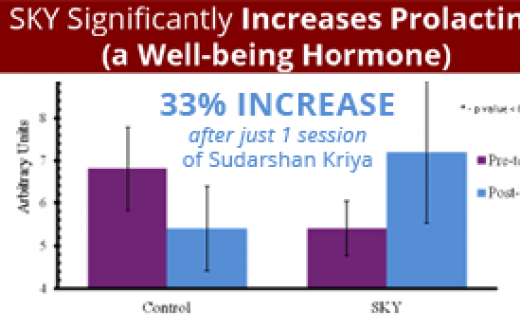By Sejal Shah
Meditation is a popular trend and is also backed by science. Here is how you can learn to meditate in 7 easy steps. Try now!
Over the last several years, the popularity of meditation has surged in the west.
Not only that it is trendy, but it is also a scientifically-backed way to alleviate stress and promote happiness.
You can begin by meditating just for 5-10 minutes. It is important to set aside that much time in your daily routine to develop a habit.
Thoughts are no hindrance to meditation. So it is better not to attempt to force them to disappear.
Though there are many styles of meditation, guided meditation could be a safe place, to begin with.
Apps like Journey App are useful to get you started. But there’s nothing like learning a personalized technique from a well-trained meditation teacher if you want to go deeper.
Benefits of meditation: why meditation is trending high
In recent times, no matter what you do, it is almost impossible to escape the buzzword "meditation." Everyone from top CEOs to athletes and celebrities and even homemakers are talking about how meditation has become part of their daily routine. Finding inner peace, living in the present moment, relieving stress, cultivating focus, compassion, kindness, and mindfulness, or simply improving the quality of your daily life are some of the benefits of the regular practice of meditation.
According to Inc, in a recent interview for Business Insider's podcast "Success! How I Did It," bestselling author Tim Ferriss said that nearly all of the 140 successful people he included in his latest book, "Tribe of Mentors," had some sort of mindfulness or meditation habit.
There are now decades of research backed by organizations like the National Institutes of Health that have linked regular meditation to improvement in brain health and functioning and many other physical and mental health benefits. According to the American Heart Association, meditation can result in improved focus and emotional control, which in turn yields lowered blood pressure. If you are still evaluating why you should meditate, here is one of our most popular blog posts that will answer your questions.
All this is great! But how do you actually start meditating?
Learning to meditate is easy: It only takes only a few steps!
The popularity of meditation is ever-increasing, and we are happy that you are here for learning meditation!
And from personal experience, we can tell you that making meditation part of your daily routine is a totally worthwhile habit to make.
Like anything else, meditation is a skill and it takes practice to nurture it. But it is not as hard as you think. On the contrary, it may become very easy for you by learning some basics. You can begin today with just a few steps.
Step 1: Find yourself 5-10 minutes of time and be in a quiet place.
Step 2: Sit in a comfortable position, be it a chair or meditation cushion. Keep your back and neck straight yet relaxed. Eyes gently closed. Palms facing up on your knees or in your lap.
Step 3: Begin by taking 2-3 mindful breaths. Have a gentle smile on your face.
Step 4: Gently and step by step scan through your whole body starting from your feet, gradually moving up towards your head. This body scan will relax your whole body.
Step 5: Be at ease with any noise in your surrounding, discomfort in your body, or floating thoughts and emotions in your mind. Accepting and being at ease are the best ways to help you prevent being distracted while meditating.
Pro tip: Meditation is a naturally occurring state of the mind. The more skilled you become at meditation, the "deeper" you can tap into this state. But at the same time, remember, it's also natural for your mind to house a swarm of thoughts and keep swinging between past and future. Don’t resist or fight with them. Accept them and be at ease with them.
Step 6: Sit still as much as possible doing nothing for the next few minutes. That is it, you are meditating!
Step 7: After 5-10 minutes of meditation (if you like you can use a soft beeper or meditation timer), slowly and gradually open your eyes. Acknowledge how relaxed you feel from when you started and feel good about it.
Hurray! Congratulations! You finished your 1st meditation session on your own!!!
How do you make a habit out of it: daily practice
You can keep doing this (Step 1-7) for a week or two. As you start feeling more comfortable with meditating for 5-10 minutes if you like you can increase the duration to 15-20 minutes.
Or once in a while, you can meditate using the Journey App (or any other meditation app). It has some amazingly relaxing meditations ranging from 5-30 minutes!
Come what may, continue to meditate twice or at least once per day, every day! It takes about 30-40 days of consistent practice to cultivate it as a habit. And it is doable, you can make it.
Plus if you are up for it, you may want to jot down your acknowledgments and observations in a meditation journal. Refrain from doing any intellectual analysis. Just enjoy your journaling time.
Going deeper: nurturing a personal meditation practice
You can continue what you began with as a lifelong practice!
But know that there is much more and you have just scratched the surface.
If you are ready to dive deeper, choose a meditation technique and consider learning it from a trained teacher or meditation expert. It's worth noting that it's best to learn from a teacher, yet that if you want to go the trial and error route and dabble on your own without spending any money, you can do so. But spending some dollars and having a mentor to talk to and have proper guidance anytime is totally worth it!
The most popular forms of meditation in the US are derived from ancient Hindu and Buddhist practices that began in India and spread through Asia. An important tip here is to choose a style that is easy yet profound, sustainable, and enjoyable and is backed by tradition as well as science.
Ideal techniques for beginners: SKY and Sahaj
I have explored quite a bit. And I would recommend that beginners consider SKY Breath Meditation, where rhythmic breathing is your anchor, or Sahaj Samadhi Meditation, where a personalized mantra is your anchor. In fact, I have practiced both every single day for a decade, and thank God, I have been able to do this, the quality of my life has transformed for the better in every aspect. Both meditation styles complement each other so well, make the practice complete. Both techniques are proven to relieve stress and anxiety! In scientific terms, both SKY and Sahaj are automatic self-transcending types of meditation techniques! Though SKY can also be an open monitoring type of meditation! If you are a newbie, and these terminologies don’t make any sense to you, that is completely fine! Safely ignore them.
A 2019 study at Yale University evaluated the impact of three well-being programs on undergraduate students: SKY Breath Meditation, Mindfulness-Based Stress Reduction, and Emotional Intelligence, compared to a control group. Of all the programs, SKY Breath Meditation had the most benefits—reducing stress and depression, enhancing mental health, social connection, mindfulness, and positive emotions.
Here are some research findings on Sahaj Samadhi Meditation including battling anxiety and depression in late life.
I would recommend starting with learning SKY and then top it up by learning Sahaj.
Want to know more about SKY?
Join Beyond Breath - a free online introductory session at your convenience, needless to say, the sooner the better!
Glad that your meditation journey has begun today, and here is a wish that you enjoy every step and milestone! We are available to help at any point!
Sejal Shah, E-RYT 500 Sri Sri Yoga Teacher, YACEP, C-IAYT, Meditation Teacher, SKY Instructor, NYU Post Graduate Medical School approved Yoga-CME retreat facilitator, Mind-Body Wellness Writer, Homeopath. She can be followed on YouTube, Instagram, Twitter, and Facebook.































